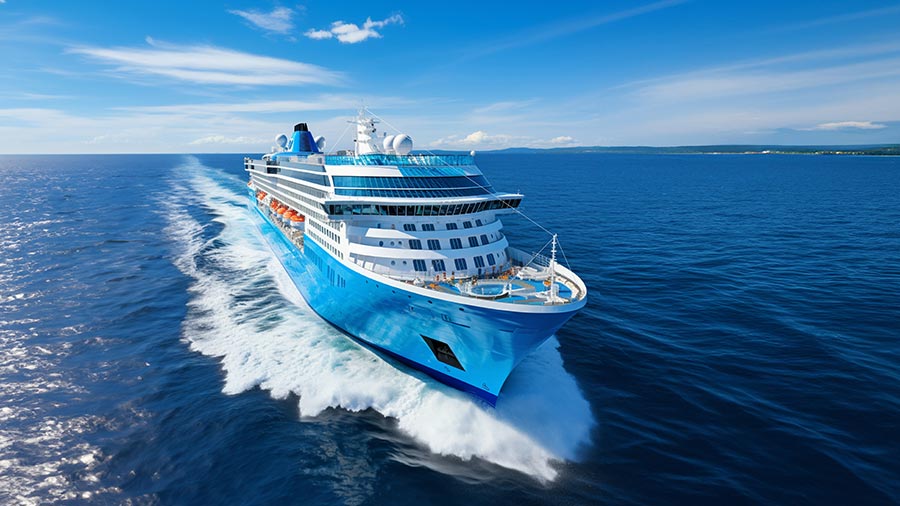China
Manila blasts China’s ‘unprovoked aggression’ in latest South China Sea incident

China’s coast guard on Saturday fired a water cannon at a Philippine supply boat in disputed waters in the South China Sea, causing “significant damages to the vessel” and injuring its crew, the Philippine coast guard said.
Manila was attempting to resupply troops stationed on a ship at the Second Thomas Shoal, known locally as Ayungin Shoal, when the Chinese coast guard and maritime militia “harassed, blocked, deployed water cannons, and executed dangerous maneuvers against the routine RoRe (rotation and resupply) mission,” said the Philippine National Task Force for the West Philippine Sea.
The West Philippine Sea is the part of the South China Sea that Manila claims as its jurisdiction.
The Chinese coast guard also set up “a floating barrier” to block access to shoal where Manila ran aground an old warship, BRP Sierra Madre, to serve as a military outpost.
The Philippine task force condemned China’s “unprovoked aggression, coercion, and dangerous maneuvers.”
Philippines’ RoRe missions have been regularly blocked by China’s coast guard, but this is the first time a barrier was set up near the shoal.
The Philippine coast guard nevertheless claimed that the mission on Saturday was accomplished.
Potential consequences
The Second Thomas Shoal lies within the country’s exclusive economic zone where Manila holds sovereign rights.
China, however, claims historic rights over most of the South China Sea, including the Spratly archipelago, which the shoal forms a part of.
A Chinese foreign ministry’s spokesperson on Saturday said the Philippine supply vessel “intruded” into the waters near the shoal, called Ren’ai Jiao in Chinese, “without permission from the Chinese government.”
“China coast guard took necessary measures at sea in accordance with law to safeguard China’s rights, firmly obstructed the Philippines’ vessels, and foiled the Philippines’ attempt,” the ministry said.
“If the Philippines insists on going its own way, China will continue to adopt resolute measures,” the spokesperson said, warning that Manila “should be prepared to bear all potential consequences.”
U.S. Ambassador to the Philippines MaryKay Carlson wrote on social media platform X that her country “stands with the Philippines” against China’s maneuvers.
Beijing’s “interference with the Philippines’ freedom of navigation violates international law and threatens a free and open Indo-Pacific,” she wrote.
Australian Ambassador to the Philippines Hae Kyong Yu also said that Canberra shares the Philippines’ “serious concerns about dangerous conduct by China’s vessels adjacent to Second Thomas Shoal.”
“This is part of a pattern of deeply concerning behavior,” Yu wrote on X.
Edited by Jim Snyder.
Read the rest of this article here >>> Manila blasts China’s ‘unprovoked aggression’ in latest South China Sea incident

The New Company Law brings substantial changes with implications for new and existing foreign invested enterprises and stakeholders. Foreign investors must assess if adjustments to existing structures
Despite recent economic challenges, many organizations’ China operations provide unparalleled access to one of the world’s largest and most competitive global supply chains. Over the past 30 years, a significant number of foreign invested enterprises (FIEs) have been established in China. As of the end of 2022, the number of FIEs operating in China had exceeded 1.12 million.
Compared to their domestic counterparts, FIEs demonstrate greater caution regarding legal revisions and are diligent in making swift adjustments. This stems not only from the closer scrutiny FIEs face from regulatory authorities but also from their commitment to compliance and maintaining a competitive edge.
Clearly, there has been a shift in China’s corporate regulations—from merely encouraging an increase in the number of companies to focusing on attracting mature enterprises and higher-quality investments. While the transition from a broad approach to a more refined one may cause short-term challenges, it ultimately benefits the company’s long-term development. By returning to the original intent of setting registered capital, it not only protects the interests of creditors but also shields shareholders from the operational risks of the company.
In China’s foreign investment landscape, while most FIEs exercise commercial prudence in determining registered capital—factoring in capital expenditures, operational costs, and setting aside surplus funds—some opt for higher registered capital levels to avoid future capital increase procedures. This typically involves lengthy document signing and registration changes, lasting 1-2 months.
Joint ventures (JVs) often impose stricter payment deadlines for registered capital in their articles of association to ensure both parties’ simultaneous contributions align with operational needs. Conversely, wholly foreign-owned enterprises (WFOEs) tend to favor flexibility in payment deadlines, often allowing full payment before the company’s operational period expires.
Given these circumstances, despite the generally stronger capital adequacy among foreign companies compared to domestic entities, many FIEs could be affected by the new capital contribution rules.
This article is republished from China Briefing. Read the rest of the original article.
China Briefing is written and produced by Dezan Shira & Associates. The practice assists foreign investors into China and has done since 1992 through offices in Beijing, Tianjin, Dalian, Qingdao, Shanghai, Hangzhou, Ningbo, Suzhou, Guangzhou, Dongguan, Zhongshan, Shenzhen, and Hong Kong. Please contact the firm for assistance in China at china@dezshira.com.
China
Foreign Tourist Groups on Cruise Ships Fully Permitted Visa-Free Entry in China

China will allow visa-free entry for foreign tourist groups arriving by cruise ship at 13 ports along the coast, starting May 15, 2024. Visitors must stay with the same ship and in permitted areas for up to 15 days. This policy aims to boost tourism and facilitate high-quality development in the cruise industry.
China’s immigration agency announced that it will grant a visa-free policy for foreign tourist groups to enter China by cruise at all cruise ports along the coast of China, starting May 15, 2024. The tourist group must remain with the same cruise ship until its next port of call and stay within permitted areas for no more than 15 days.
Effective May 15, 2024, the National Immigration Administration (NIA) has officially implemented a visa-free policy for foreign tourist groups entering China via cruise ships. This progressive move aims to enhance personnel exchanges and foster cooperation between China and other nations, furthering the country’s commitment to high-level openness.
Under this policy, foreign tourist groups, comprising two or more individuals, who travel by cruise ship and are organized by Chinese domestic travel agencies, can now enjoy visa-free entry as a cohesive group at cruise ports in 13 cities along the Chinese coast.
The tourist group must remain with the same cruise ship until its next port of call and stay within China for no more than 15 days. The eligible areas for this policy are coastal provinces (autonomous regions and municipalities) and Beijing.
Furthermore, to support cruise tourism development, seven additional cruise ports—Dalian, Lianyungang, Wenzhou, Zhoushan, Guangzhou, Shenzhen, and Beihai—have been included as applicable ports for visa-free transit.
The recent implementation of the visa-free policy for foreign tourist groups entering China via cruise ships is poised to have several significant effects. The policy will provide crucial support for the cruise economy and the overall cruise industry. By facilitating smoother travel for foreign tourist groups, it acts as a catalyst for high-quality development in this sector.
Additionally, under this policy, international cruise companies can strategically plan their global routes by designating Chinese port cities, such as Shanghai, Xiamen, and Shenzhen, as docking destinations. This move is expected to attract more cruise ships to Chinese ports, ultimately bringing in a larger number of international visitors to the Chinese market.
This article is republished from China Briefing. Read the rest of the original article.
China Briefing is written and produced by Dezan Shira & Associates. The practice assists foreign investors into China and has done since 1992 through offices in Beijing, Tianjin, Dalian, Qingdao, Shanghai, Hangzhou, Ningbo, Suzhou, Guangzhou, Dongguan, Zhongshan, Shenzhen, and Hong Kong. Please contact the firm for assistance in China at china@dezshira.com.
China
China’s New Tariff Law: Streamlining and Standardizing Current Tariff Regulations

China’s new Tariff Law consolidates import and export duties, clarifies rules for imposing counter-tariffs, and sets a December 1, 2024 effective date. It codifies existing practices on cross-border e-commerce and rules on the origin of goods into law, impacting trade relations.
China’s new Tariff Law consolidates rules on import and export duties that were previously implemented via several legal documents and makes important clarifications and additions to prior regulations. Among other changes, it stipulates provisions for the Chinese government to impose counter-tariffs on imported goods, codifying these powers into law for the first time. We outline all the notable updates to the China Tariff Law and discuss the implications for the country’ current trade relations.
On April 26, 2024, the National People’s Congress (NPC), China’s legislature, adopted the Tariff Law of the People’s Republic of China (the “Tariff Law”) after several rounds of revisions.
The new Tariff Law will replace the Import and Export Tariff Regulations of the People’s Republic of China, which fall under the purview of the State Council, and adopts many of its provisions.
Previously, Chinese law had not stipulated legislative powers to implement countervailing tariffs, although China was nonetheless able to impose counter-tariffs on trade partners through other means.
China’s new Tariff Law comes into effect on December 1, 2024.
China’s Tariff Law elevates several existing provisions and practices to the level of law. For instance, Article 3 of the Tariff Law clarifies the obligations of cross-border e-commerce platforms for tariff withholding and implementing consolidated taxation.
The Tariff Law also solidifies the rules and regulations on the origin of goods, stipulating that the application of tariff rates shall comply with the corresponding rules of origin. Although this has been previously implemented in practice, it is the first time this has been codified into law.
This article is republished from China Briefing. Read the rest of the original article.
China Briefing is written and produced by Dezan Shira & Associates. The practice assists foreign investors into China and has done since 1992 through offices in Beijing, Tianjin, Dalian, Qingdao, Shanghai, Hangzhou, Ningbo, Suzhou, Guangzhou, Dongguan, Zhongshan, Shenzhen, and Hong Kong. Please contact the firm for assistance in China at china@dezshira.com.






